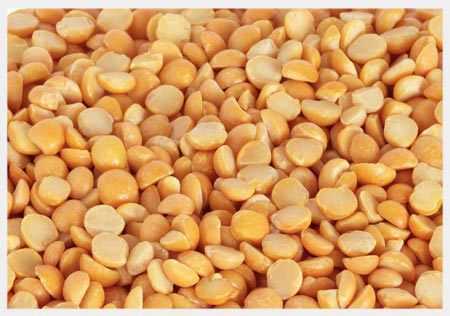
Yellow split peas are part of the legume family, which includes beans, lentils and peas. Split peas are simply peas that have been dried and split. Although yellow split peas have a milder flavor and less chlorophyll than green peas, they share the same health benefits, according to the World’s Healthiest Foods.
Advantages of Yellow split peas
Source of Protein
Protein, which is present in every cell of the body and a major component of organs, muscles and skin, is an essential part of the diet. One cup of cooked yellow split peas contain 16g of protein, according to the World’s Healthiest Foods. Plant-based proteins, including split peas, are considered incomplete proteins because they do not contain all nine amino acids. Eating rice along with split peas provides a complete protein, Medline Plus says. Yellow split peas and other foods high in fiber also help stabilize the level of sugar in the blood, which may benefit sufferers of hypoglycemia, insulin resistance and diabetes.
Source of Molybdenum
Yellow split peas are a source of molybdenum, an essential mineral that enables cells to function normally, activates some enzymes and metabolizes nitrogen. It also helps break down and detoxify sulfites, substances that may be added as preservatives or that occur naturally in foods. Foods high in sulfites, such as those from delicatessens and salad bars, can cause a sensitivity reaction in certain people, producing a rapid heartbeat, disorientation and headache. Sufficient stores of molybdenum in the body may reduce this reaction.
High in Vitamins and Minerals
Yellow split peas are a source of vitamin B1, or thiamin, potassium and phosphorus, according to Legumeworld. They are also a source of folate, the natural form of folic acid, a B vitamin essential in the formation of new cells. Folate is of special importance during periods when cells divide rapidly, such as in pregnancy and infancy, according to the National Institutes of Health Office of Dietary Supplements.